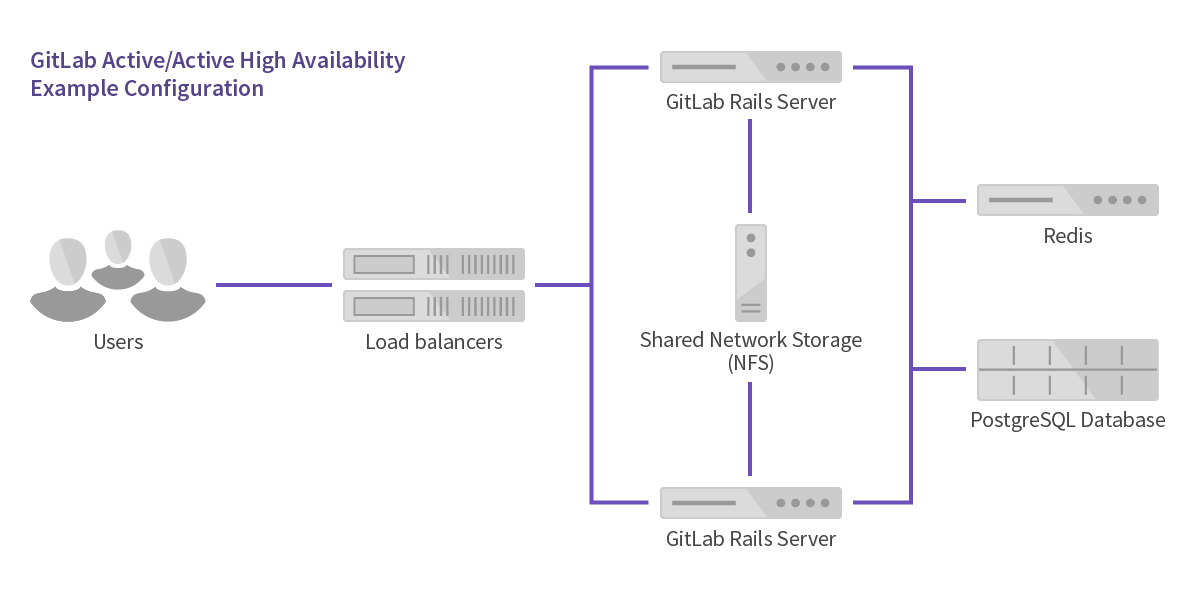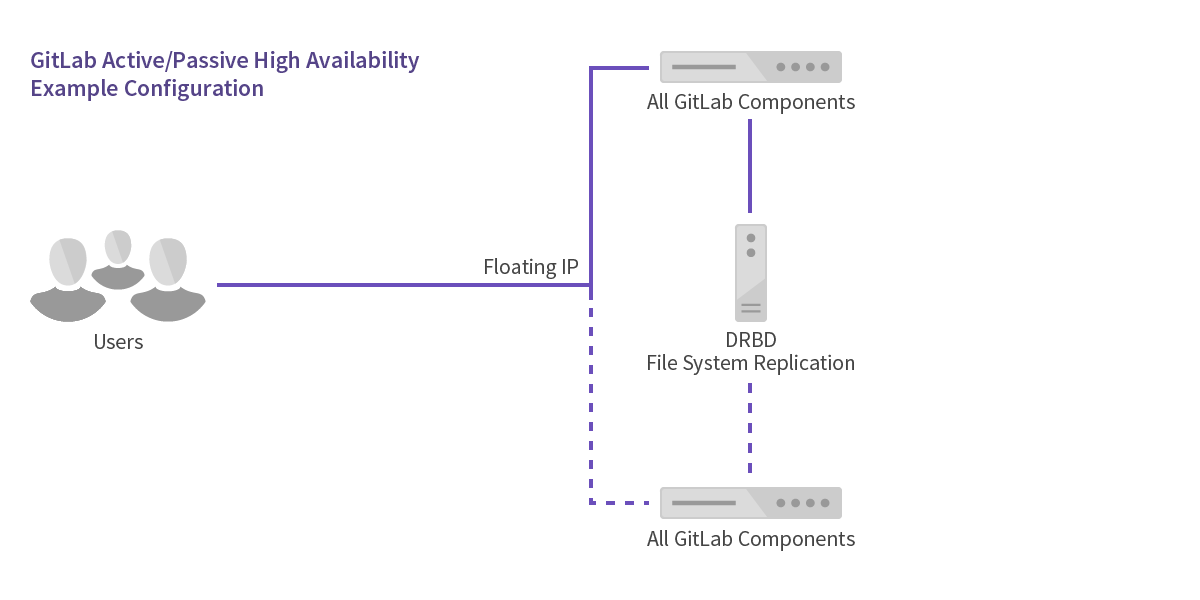High Availability
GitLab supports several different types of clustering and high-availability. The solution you choose will be based on the level of scalability and availability you require. The easiest solutions are scalable, but not necessarily highly available.
GitLab provides a service that is usually essential to most organizations: it enables people to collaborate on code in a timely fashion. Any downtime should therefore be short and planned. Luckily, GitLab provides a solid setup even on a single server without special measures. Due to the distributed nature of Git, developers can still commit code locally even when GitLab is not available. However, some GitLab features such as the issue tracker and Continuous Integration are not available when GitLab is down.
Keep in mind that all Highly Available solutions come with a trade-off between cost/complexity and uptime. The more uptime you want, the more complex the solution. And the more complex the solution, the more work is involved in setting up and maintaining it. High availability is not free and every HA solution should balance the costs against the benefits.
Architecture
There are two kinds of setups:
- active/active
- active/passive
Active/Active
This architecture scales easily because all application servers handle user requests simultaneously. The database, Redis, and GitLab application are all deployed on separate servers. The configuration is only highly-available if the database, Redis and storage are also configured as such.
Follow the steps below to configure an active/active setup:
- Configure the database
- Configure Redis
- Configure NFS
- Configure the GitLab application servers
- Configure the load balancers
Active/Passive
For pure high-availability/failover with no scaling you can use an active/passive configuration. This utilizes DRBD (Distributed Replicated Block Device) to keep all data in sync. DRBD requires a low latency link to remain in sync. It is not advisable to attempt to run DRBD between data centers or in different cloud availability zones.
Note: GitLab recommends against choosing this HA method because of the complexity of managing DRBD and crafting automatic failover. This is compatible with GitLab, but not officially supported.
Components/Servers Required: 2 servers/virtual machines (one active/one passive)

